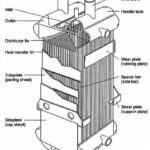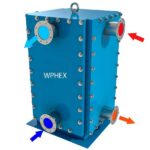Shell-MIT equation also known as MIT Equation is used for calculations of pressure drop in heavy crude oil and heated liquid pipelines. The short article below will show the method used for this calculations.
Step 1: Calculate the Reynolds number
The Reynold number can be calculated from the equation below:
\[Re\ =\ \left(\frac{92.24\ \cdot\ Q\ }{D.v}\right)\]
Where; Re = Reynolds number, dimentionless Q = Flow rate, bbl/day D = Pipe internal diameter, in v = Kinematic viscosity, cSt
Another form of Reynolds number equation in English units
\[Re\ =\ 3160\ \cdot\ \frac{Q}{D\cdot v}\]
Where; Re = Reynolds number, dimentionless Q = Flow rate, gpm D = Pipe internal diameter, in v = Kinematic viscosity, cSt
Also the Equation below can be used to calculate Reynolds number in SI Units
\[Re\ =\ 353678\cdot\frac{Q}{D\cdot v}\]
Where; Re = Reynolds number, dimentionless Q = Flow rate, m3/h D = Pipe internal diameter, mm v = Kinematic viscosity, cSt
Flow Regimes
in general flow regimes are normally indentified using the Reynolds number calculation. So to summarise those regimes;
The Flow is in Laminar region if: Re < 2000
The Flow is in Critical region if: 4000 > Re > 2000
The Flow is in Turbulent region if: Re > 4000
Step 2: Calculate the friction factor
For Laminar region
\[f\ =\ \frac{0.00207}{Rm}\]
For Turbulent region
\[f\ =\ 0.0018\ +\ 0.00662\ \cdot\ \left(\frac{1}{Rm}\right)^{0.355}\]
Where; f = Friction factor, dimentionless Rm = modified Reynolds number, dimentionless
Below is how to calculate the modified Reynolds number
\[Rm\ =\ \frac{Re}{7742}\]
The friction factor calculated above is not the darcy friction factor, it’s more like the fanning friction factor. To read about the difference between those friction factors click here
Step 3: Calculate the pressure drop using Shell-MIT equation
The pressure drop due to friction can be calculated from
Shell-MIT Equation in English/US Units
\[P\ =\ \frac{0.241\left(f\cdot Sg\cdot Q^2\right)}{D^5}\]
Where; P = Frictional pressure drop, psi/mile f = friction factor, dimentionless Sg = Liquid specific gravity Q = Flow rate, bbl/day D = Pipe internal diameter, in
Shell-MIT equation in SI Units
\[P\ =\frac{6.2191\cdot10^{10}\cdot\left(f\cdot Sg\cdot Q^2\right)}{D^5}\ \]
Where; P = Frictional pressure drop, kPa/km f = friction factor, dimentionless Sg = Liquid specific gravity Q = Flow rate, m3/h D = Pipe internal diameter, mm
Refrences
E. Shashi Menon, Liquid Pipeline Hydraulics, Marcel Dekker, Inc. 2004











